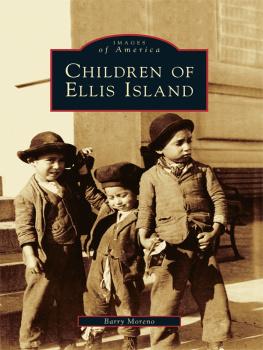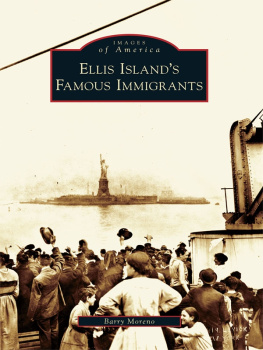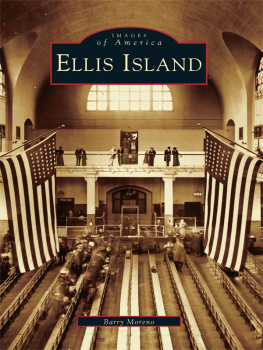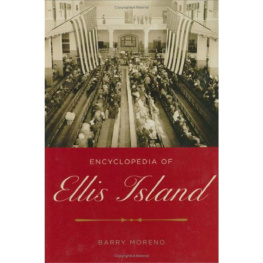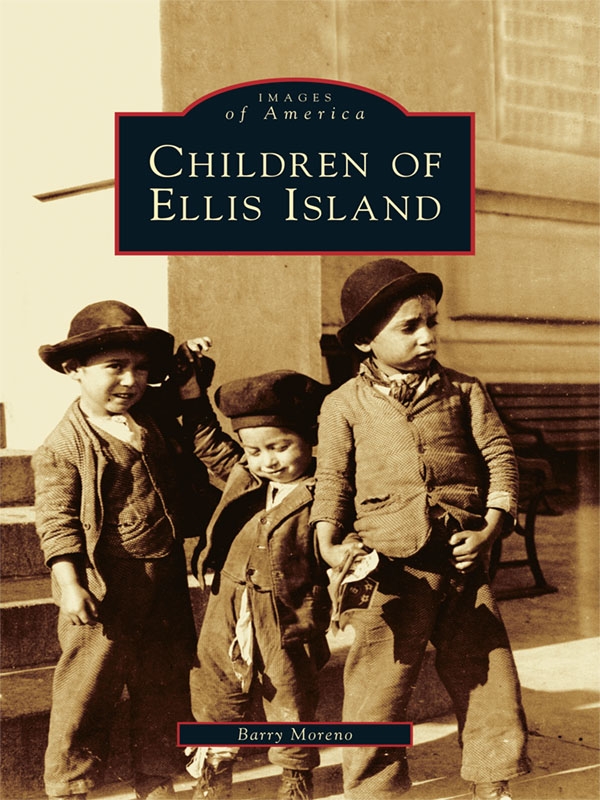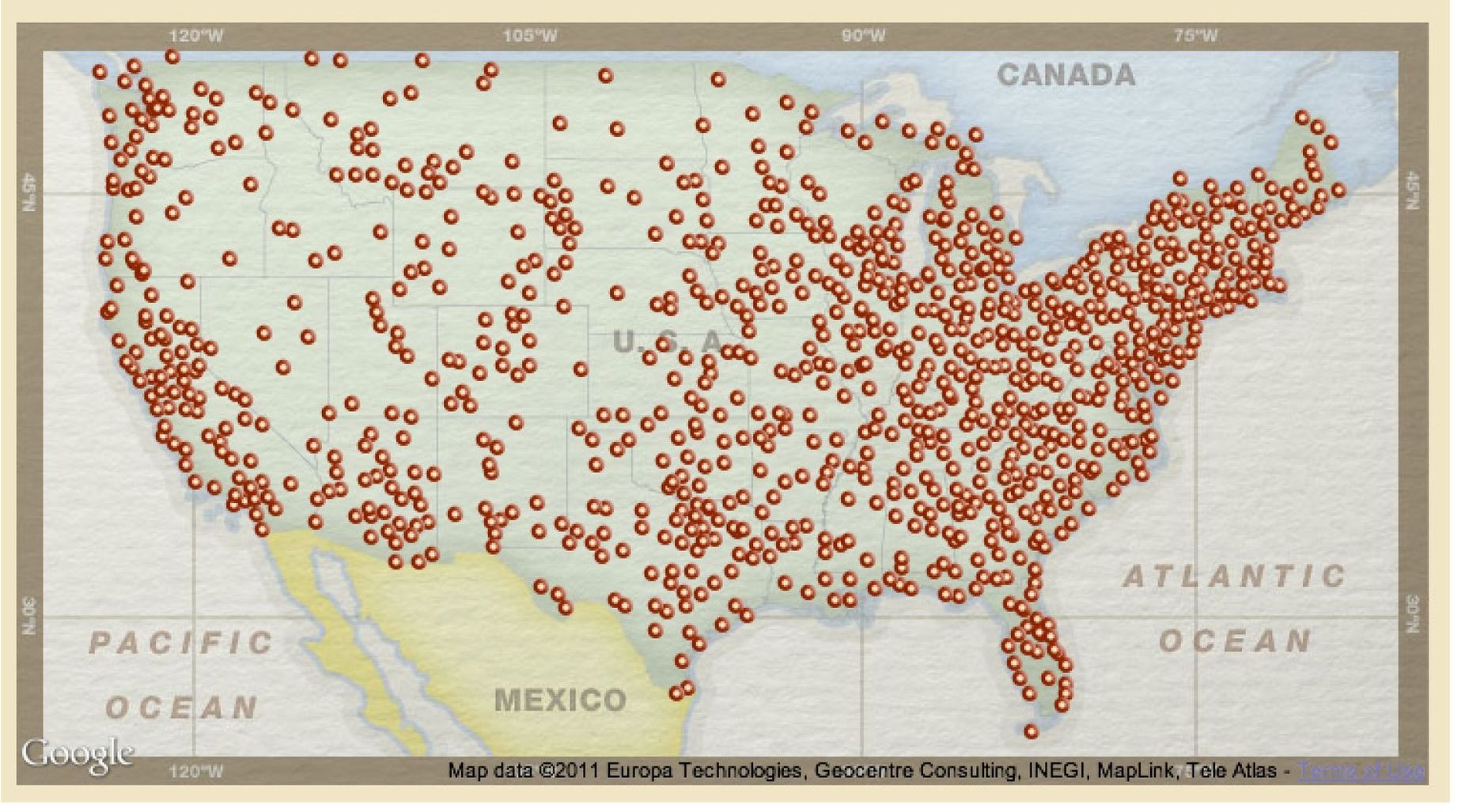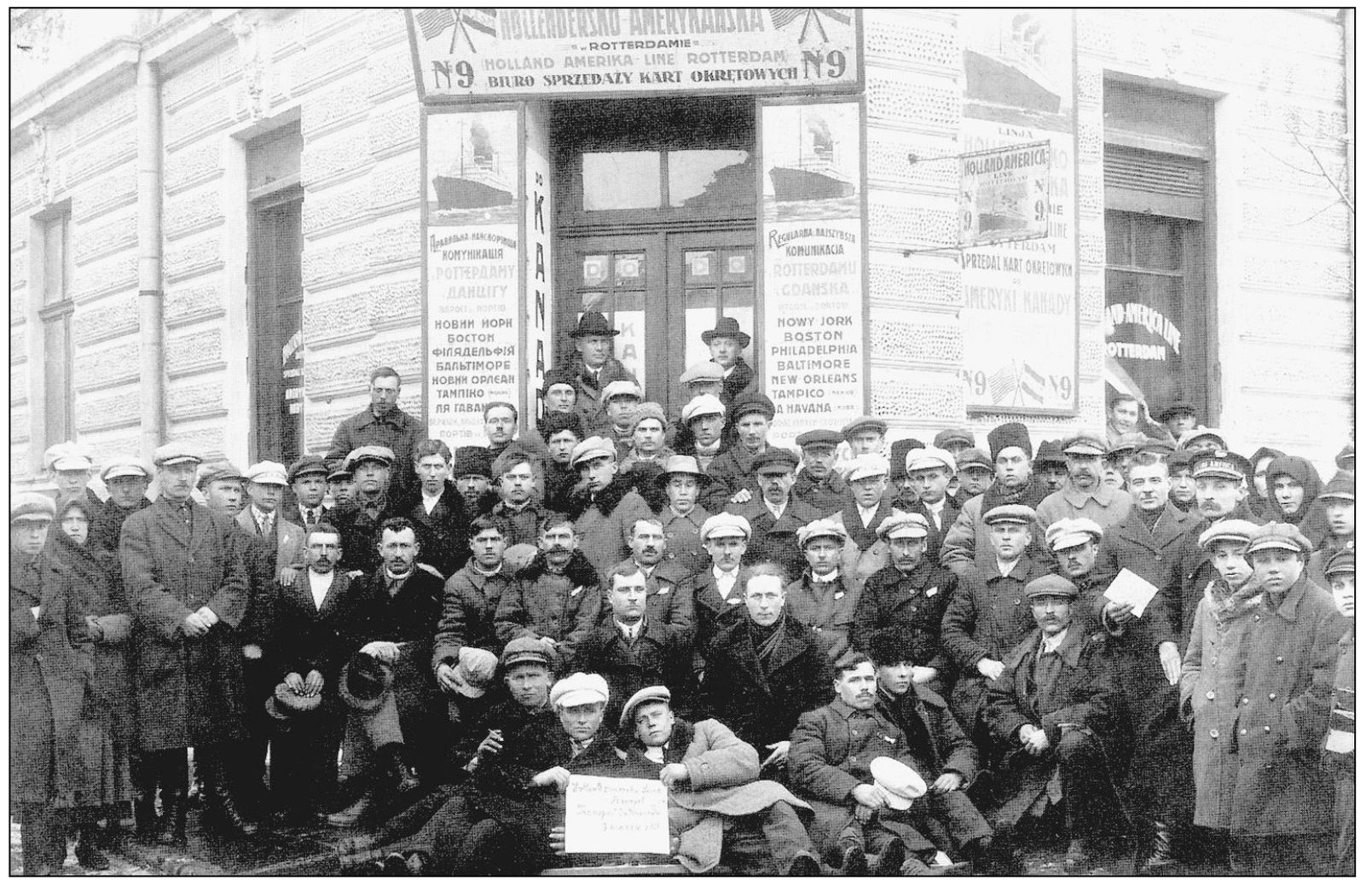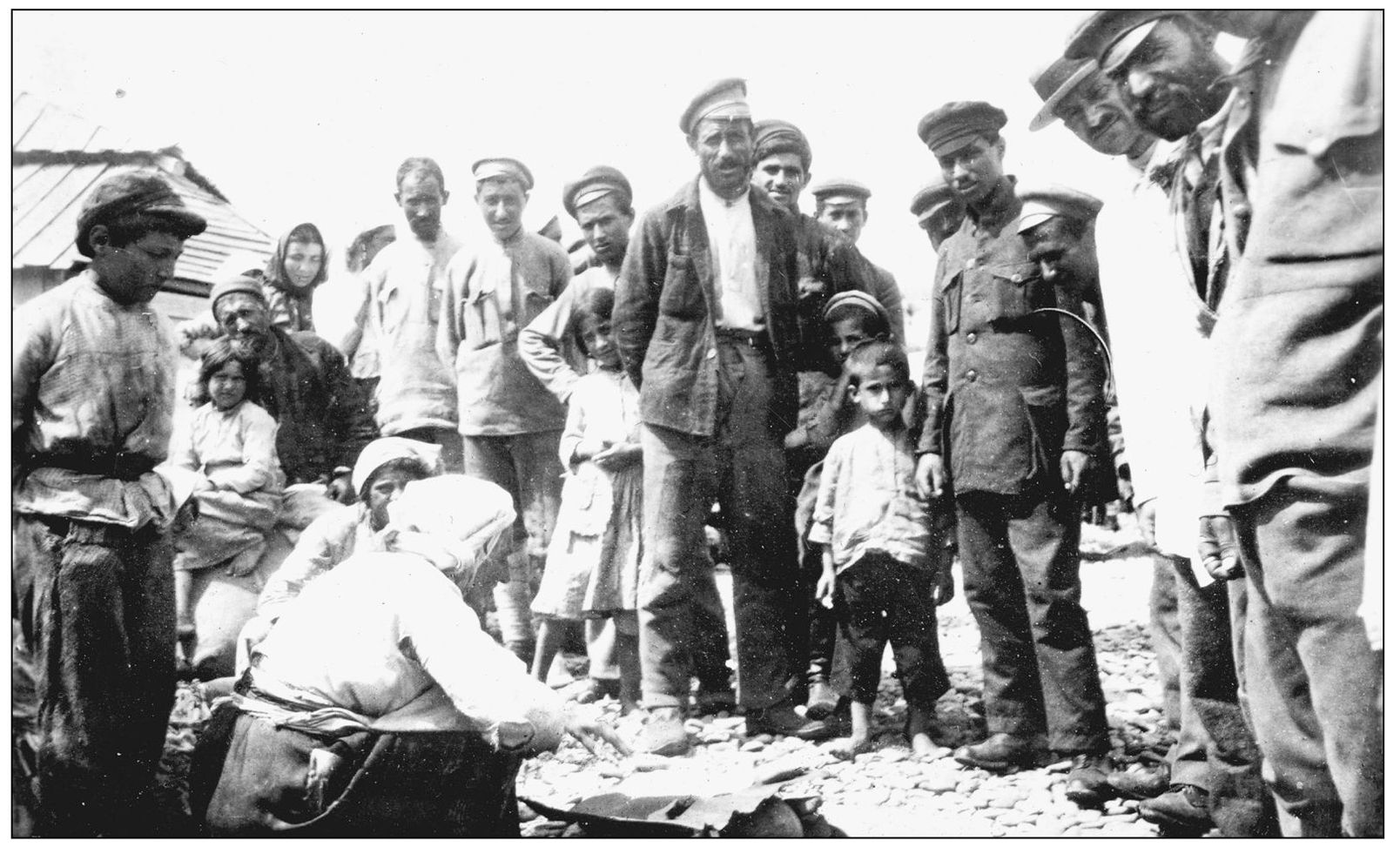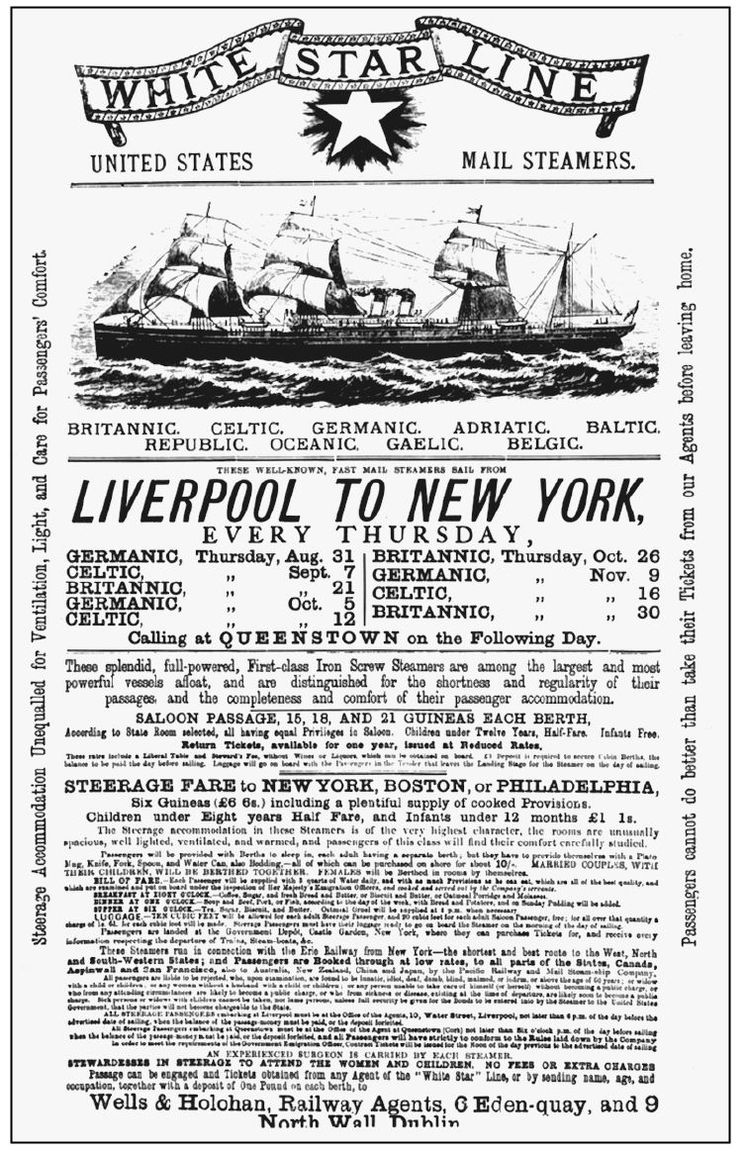I am more than grateful for all the kind assistance I received when researching and writing this book. For suggesting that I write such a volume in the first place, I must thank Andrew Beauchamp at Ellis Island and Jos Sepulveda at Liberty Island. At Arcadia Publishing, I thank my wonderful and patient editor, Pam ONeil, and production editor Sarah Gabert. And for her assistance with regard to the Frank L. Moore pictures, many thanks are due to the resourceful Shugana Campbell, archivist of the Amistad Research Center at Tulane University. For sharing her story of immigration, I thank Isabel Belarsky. My fellow workers at Ellis Island were as helpful as always. Of this group, I should particularly like to thank Diana Pardue, George Tselos, Jeffrey Dosik, Janet Levine, Eric Byron, superintendent Cynthia Garrett, Dave McCutcheon, and our library volunteers Valerie Sinclair, John Kiyusu, and Thomas Gregg. I am also grateful to filmmaker Lorie Conway and Ellis Island immigrant Emmie Kremer.
BIBLIOGRAPHY
Adamic, Louis. Laughing in the Jungle: The Autobiography of an Immigrant in America . New York: Harper & Brothers, 1932.
Corsi, Edward. In the Shadow of Liberty: The Chronicle of Ellis Island . New York: Macmillan, 1935.
Freedman, Russell. Immigrant Kids . New York: E. P. Dutton, 1980.
Haroutunian, Virginia. Orphan in the Sand . Bloomfield Hills, Mich.: [privately published], 1995.
Lawlor, Veronica. I Was Dreaming to Come to America . New York: Viking, 1995.
Mesenhller, Peter. Augustus F. Sherman: Ellis Island Portraits, 19051920 . New York: Aperture Foundation, 2005.
Moreno, Barry. Encyclopedia of Ellis Island . Westport, Connecticut: Greenwood Press, 2004
Novotny, Ann. Strangers at the Door: Ellis Island, Castle Garden and the Great Migration to America . Riverside, Connecticut: the Chatham Press, 1971.
Papashvily, George. Anything Can Happen . New York: Harper & Sons, 1945.
Pitkin, Thomas. Keepers of the Gate . New York: New York University Press, 1975.
Riis, Jacob. How the Other Half Lives . New York: Charles Scribners Sons, 1901.
Sandler, Martin W. Island of Hope: The Story of Ellis Island and the Journey to America . New York: Scholastic, 2004.
Severn, Bill. Ellis Island: The Immigrant Years . New York: Julian Messner, 1971.
Smith, Eugene W. Passenger Ships of the World - Past and Present . Boston: George H. Dean Company, 1963.
Yezierska, Anzia. Children of Loneliness: The Story of Immigrant Life in America . New York: Funk & Wagnalls, 1923.
Find more books like this at
www.imagesofamerica.com
Search for your hometown history, your old
stomping grounds, and even your favorite sports team.
One
DOWN TO THE SEA IN STEERAGE
BULGARIANS FOR AMERICA. A group of Bulgarian emigrants pose before the offices of the Holland-America Steamship Line in Tarnopol, Bulgaria. This companys agents sold tickets for ships sailing not only to U.S. cities like New York and New Orleans but also to Tampico, Mexico, and Havana, Cuba. These passengers, who include children as well as men and women, are probably emigrating for economic betterment. From here, all of them had to travel by train to the Dutch port of Rotterdam to reach their steamships. (Holland-America Line Archives.)
ARMENIAN REFUGEES ON A BEACH BY THE BLACK SEA. Not all emigrants left their homeland to escape poverty; some left to avoid violence and war. One such group was the Armenians. In this 1920 picture, a crowd of them stands in misery upon a beach at Novorossiysk, Russia. There, the Armenians awaited deportation to their benighted homeland. These refugees had survived the dreadful massacres of Armenians in Ottoman Turkey during World War I. (G. P. Floyd photograph, American Red Cross.)
ENTICEMENTS TO EMIGRATE. Just like the airlines of today, early steamship companies enticed people to travel abroad at discount prices. From 1845 to 1930, most travelers were emigrants, so Britains White Star Line vied with its many rivals to offer cheap steerage tickets to America. This advertisement was primarily intended for Irish emigrants. (National Park Service.)
LEWIS KRAUSS, BOY EMIGRANT. Lewis Krauss is pictured in Russia around 1908 at age 15. The young Jewish emigrant is just about to set off for America. He joined thousands of other immigrant boys who passed through Ellis Island on their own. Many Jews fled from the violent anti-Semitic pogroms of the period. Lewis became an American citizen in June 1916. (National Park Service.)

